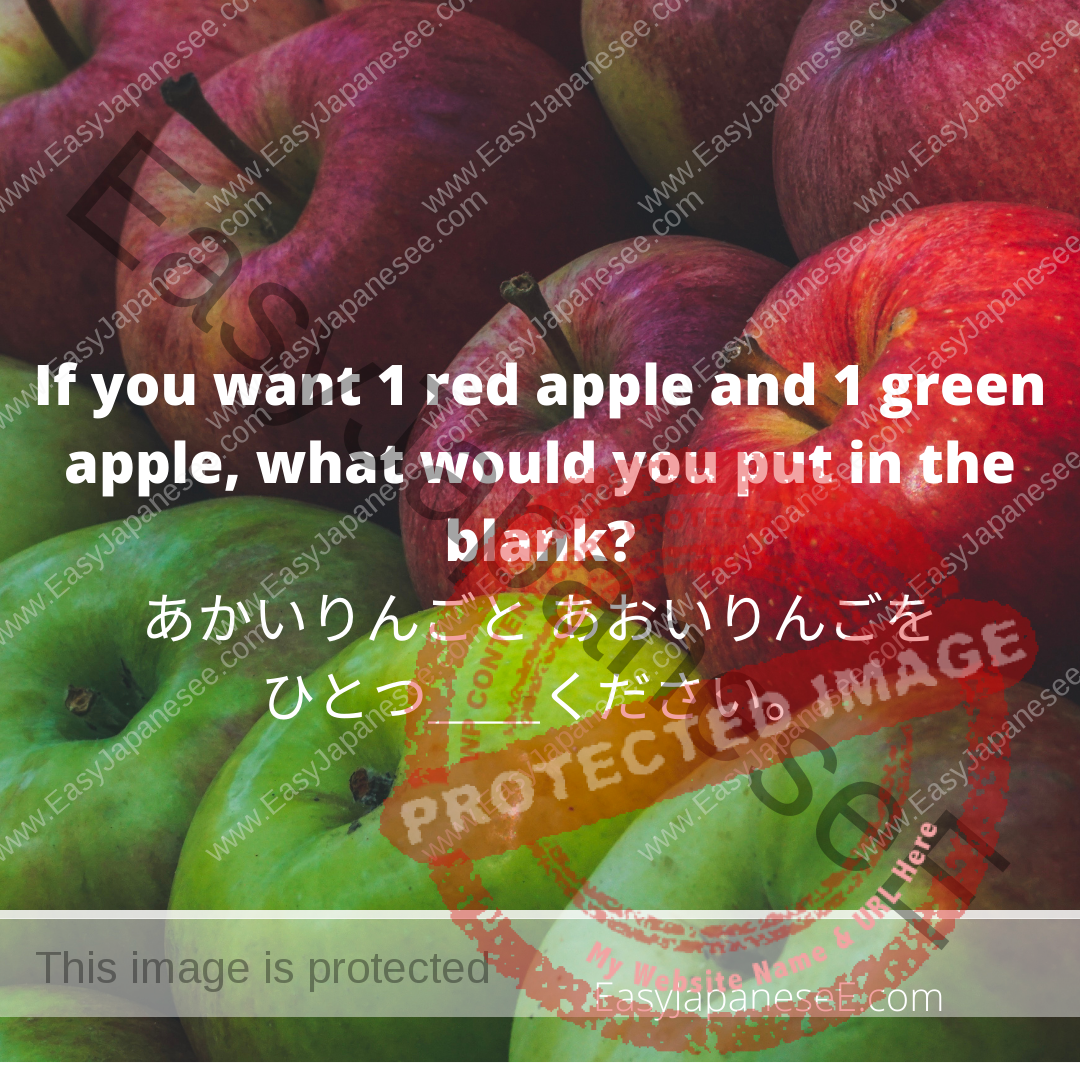Today’s Grammar Point: ずつ
Connection
[number] + [counter] ずつ
Meaning
ずつ implies the same number/amount is applied/chosen at the same time or repeatedly. So it can usually be translated using:
- [number] each
- [number] at a time
Examples
- りんごと みかんを 三つずつ ください。
Could I have 3 each of apples and mandarins? - ビールとワインを五本ずつ買いました。
I bought 5 bottles each of beer and wine. - Tシャツをこどもたちに二枚ずつあげました。
I have given children 2 T-shirts each. - 三人家族ですが、車が一台ずつあります。
We are a family of 3 and we have a car each. - 日本語と数学と歴史を一時間ずつ勉強します。
I study Japanese, Mathematics and History for 1 hour each. - みんなで千円ずつはらいました。
We (or they) all paid 1000 yen each. - いぬとねこが四匹ずついます。
We have 4 each of dogs and cats. - 毎日こうちゃとコーヒーを二杯ずつのみます。
I drink 2 cups each of tea and coffee every day. - リンゴのかわを一つずつ手でむきました。
I peeled apples one by one (=one at a time) by hand. - クラスのみんなが一人ずつ発表します。
Everyone in class is going to make a presentation one at a time.
Variation
- 文法の本を毎日すこしずつ読んでいます。
I’m reading a grammar book every day a little at a time.
Tips
- It’s rare but some people write it づつ. The pronunciation is the same, nonetheless.
- Usually a phrase to specify the number is added like an adverb in Japanese, so a phrase of “[number] + [counter] + ずつ” itself does not usually need any particle. Use appropriate particles for other parts of the sentence.
Today’ Question
If you want to have one red apple and one green apple, what would you put in the blank.
あかいりんごと あおいりんごを ひとつ__ください。
Answer
ずつ
The sentence should mean: Could I have one each of the red and the green apples, please?
Added note 1: 青 blue or green?
I bet many of you are wondering why I said あおいりんご instead of みどりのりんご in the question sentence. If you call green ones みどりのりんご, people will understand you but a majority of native speakers will call them あおいりんご or あおりんご (strictly speaking, they are not the same. If you want to know the difference, see below, but that bit is not important for now). We use the word あお for “green” quite often. I have written a bit about this in a previous post: Traffic lights – green or blue?
Added note 2: the difference between 青りんご and 青いりんご
青 in 青りんご is a noun and the word 青りんご is a compound noun for species of apples which don’t turn red. “Granny Smith” is a typical example of 青りんご but yellow varieties like “Golden Delicious” and “Ourin (王林)” are also classified as 青りんご.
青い part of 青いりんご is an いadjective which has the meanings of “blue,” “green” and/or “young/immature.” Thus, while 青いりんご can be green apples like “Granny Smith” but it could also refer to “(an) unripe apple(s)” which is/are yet to be red.

